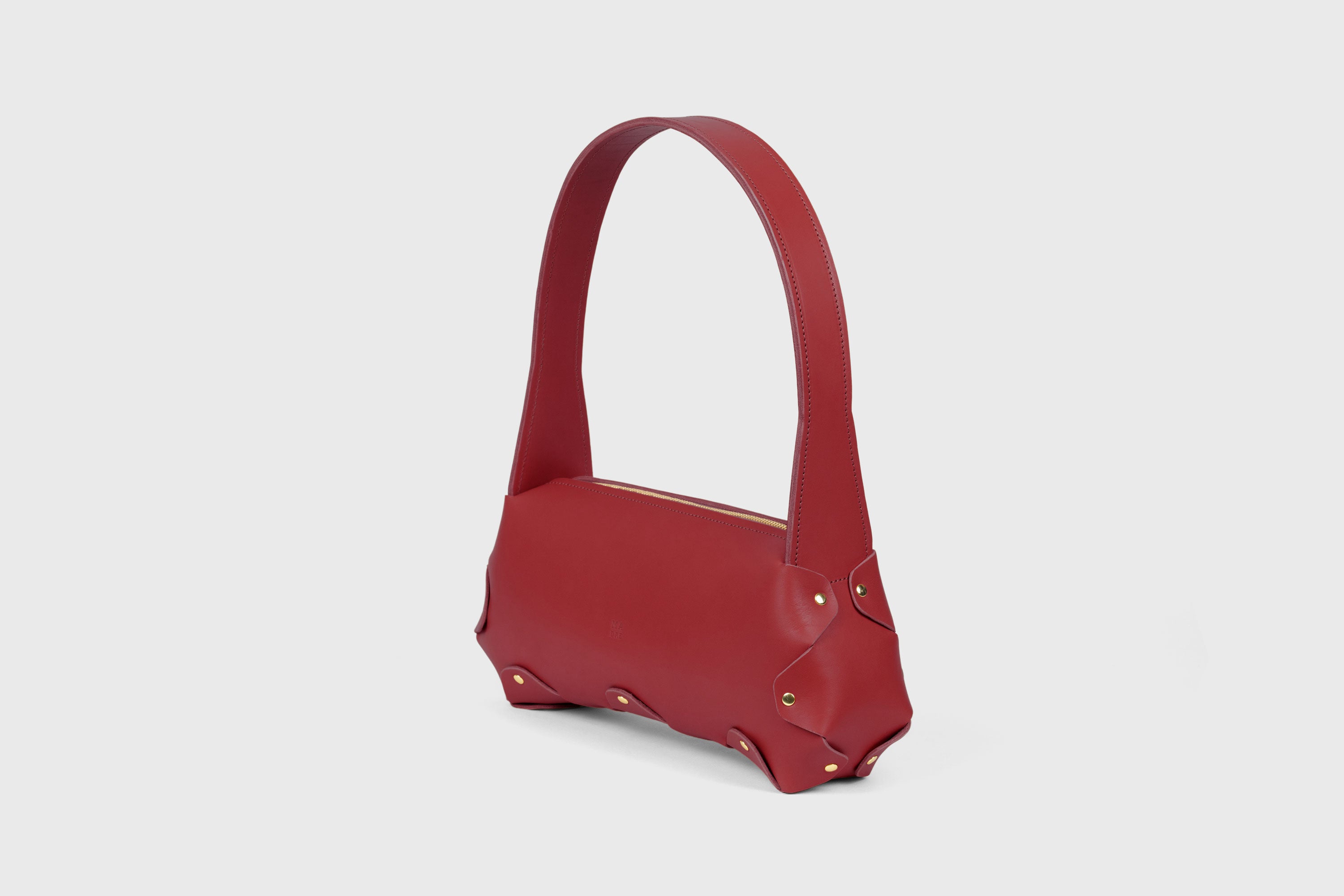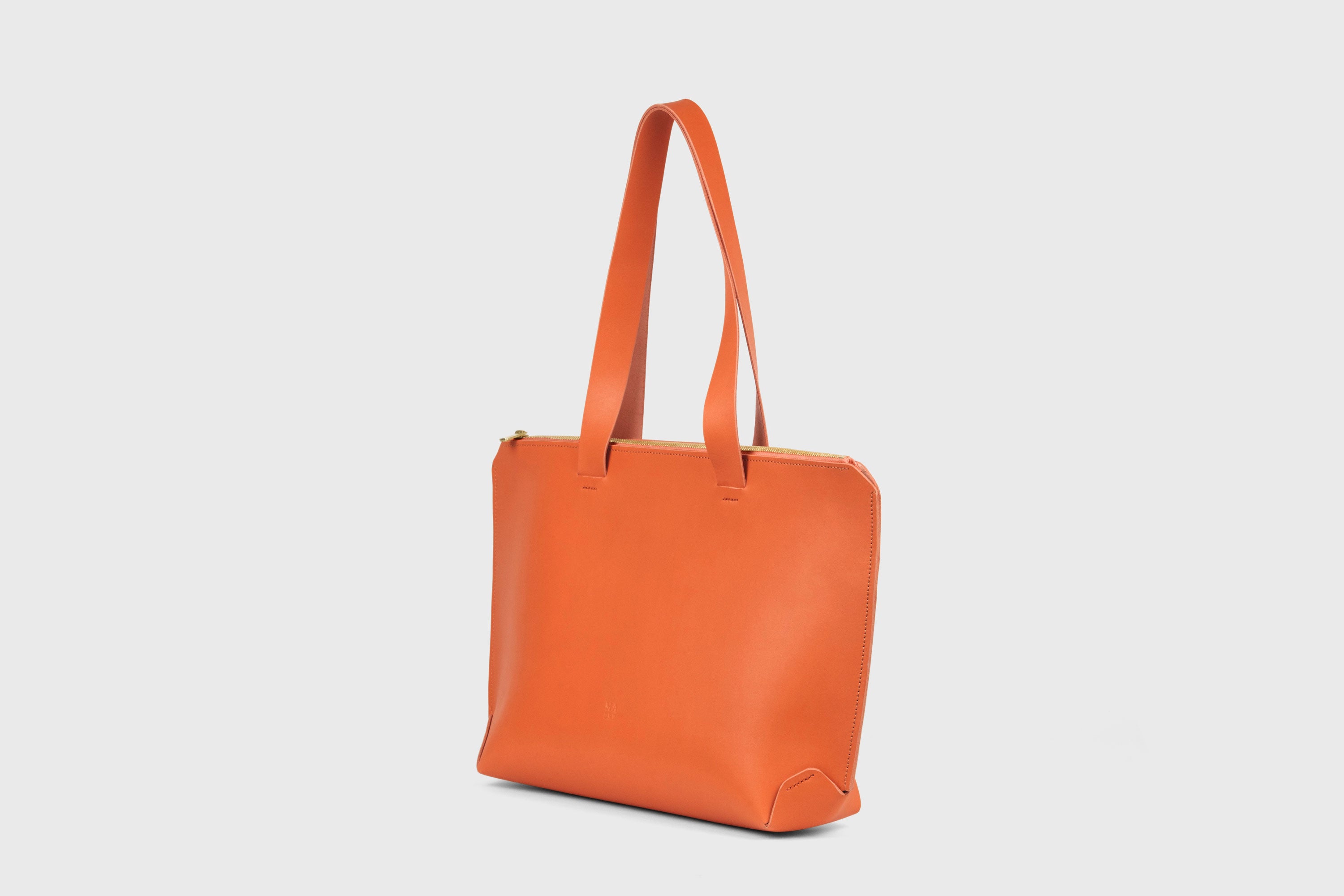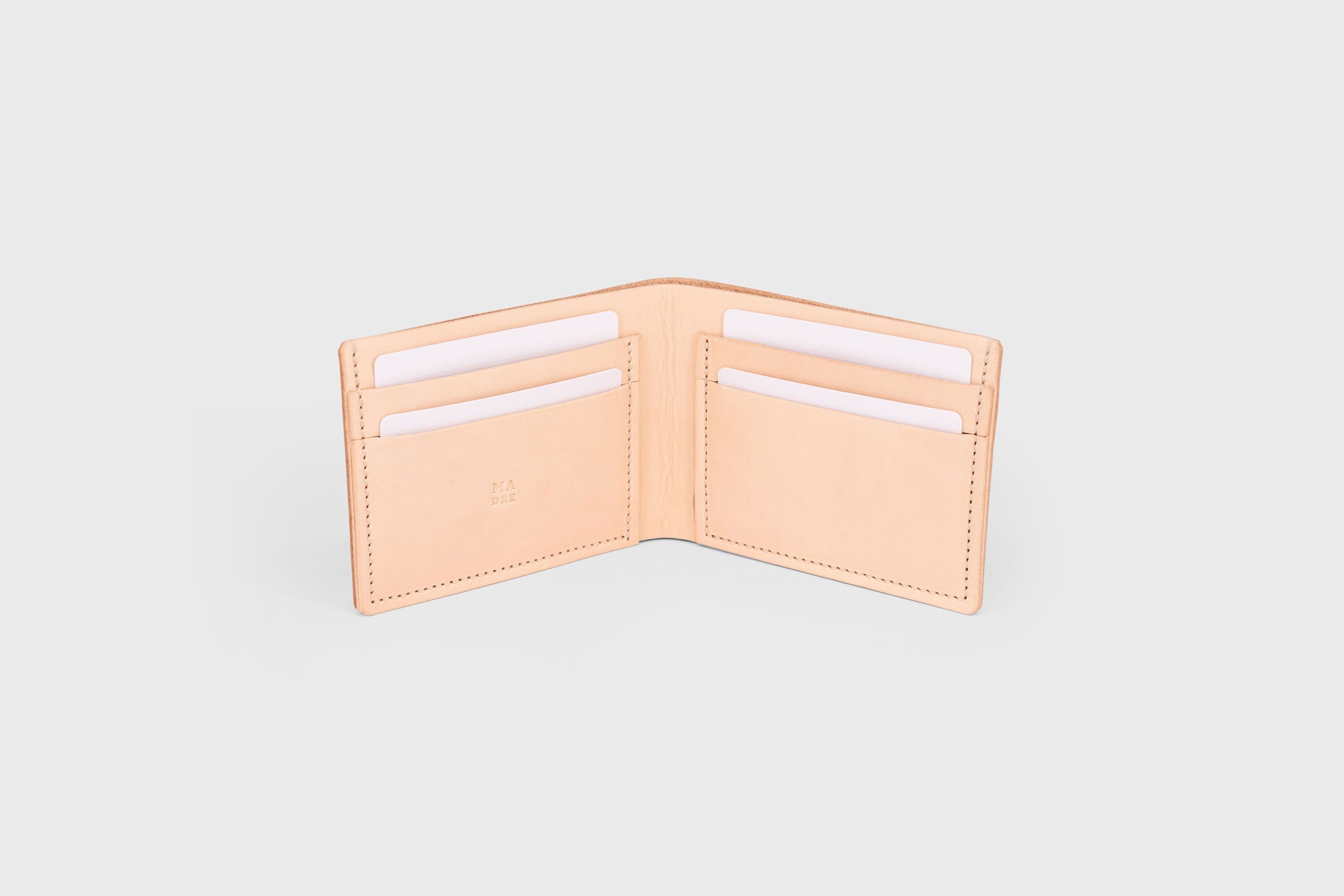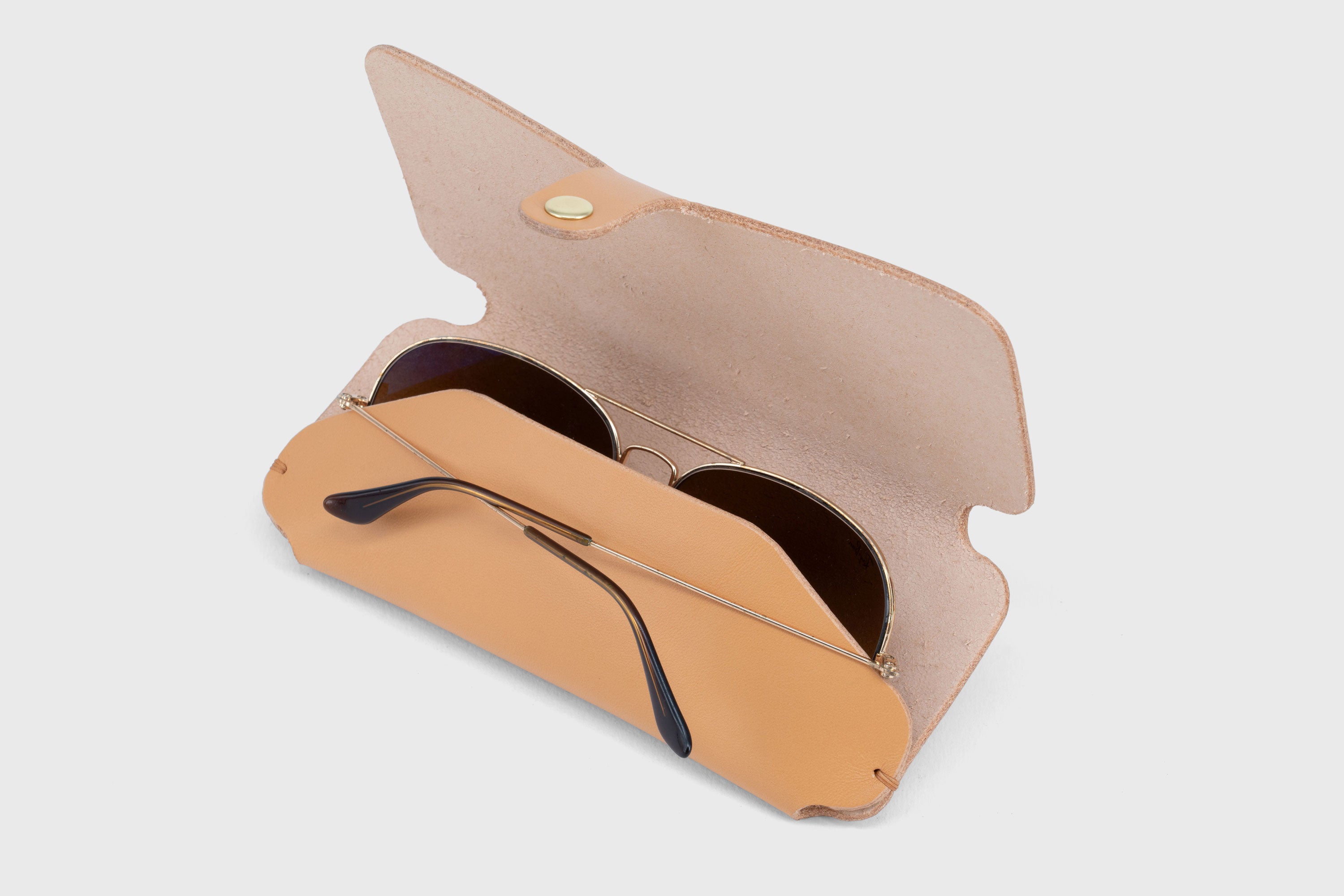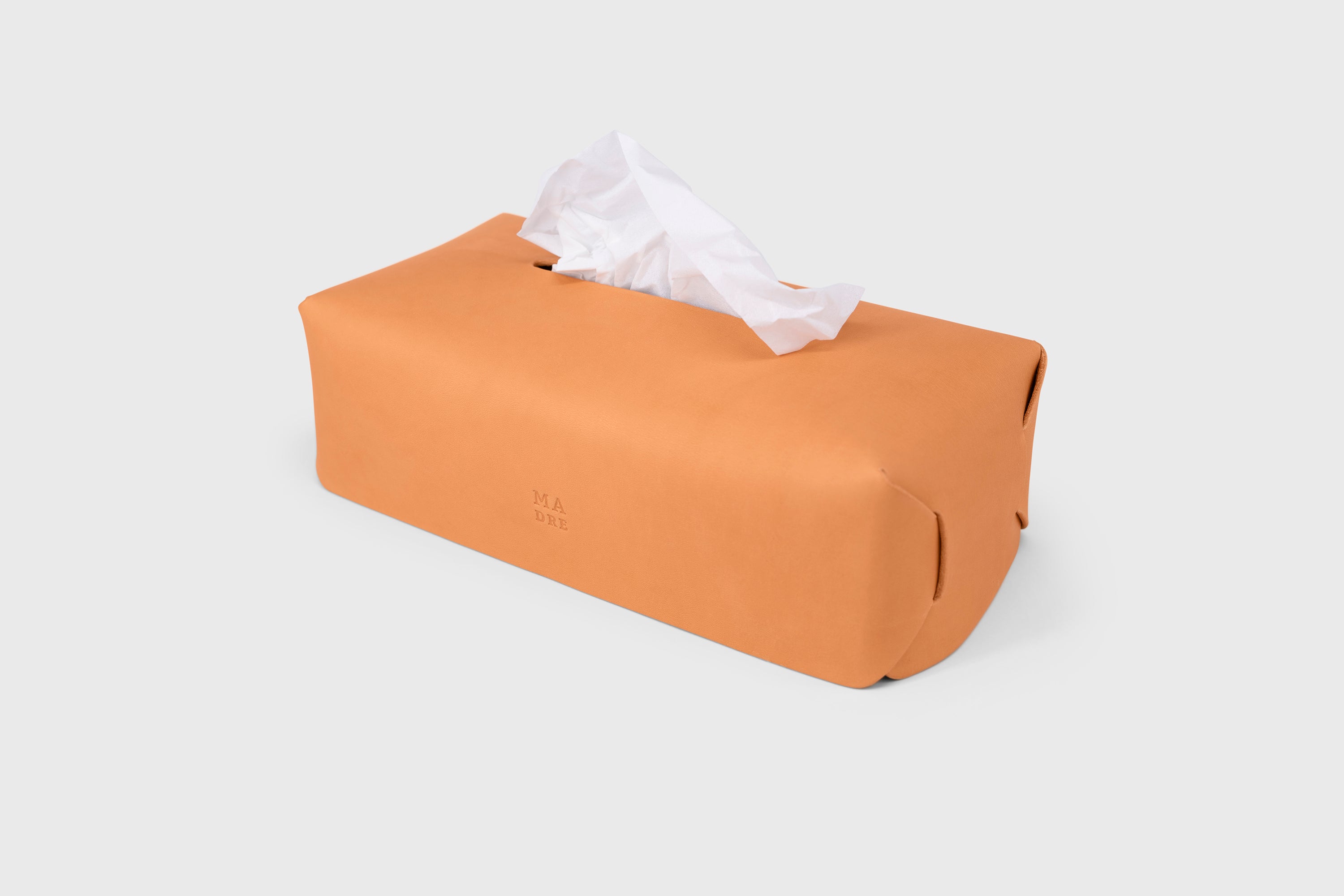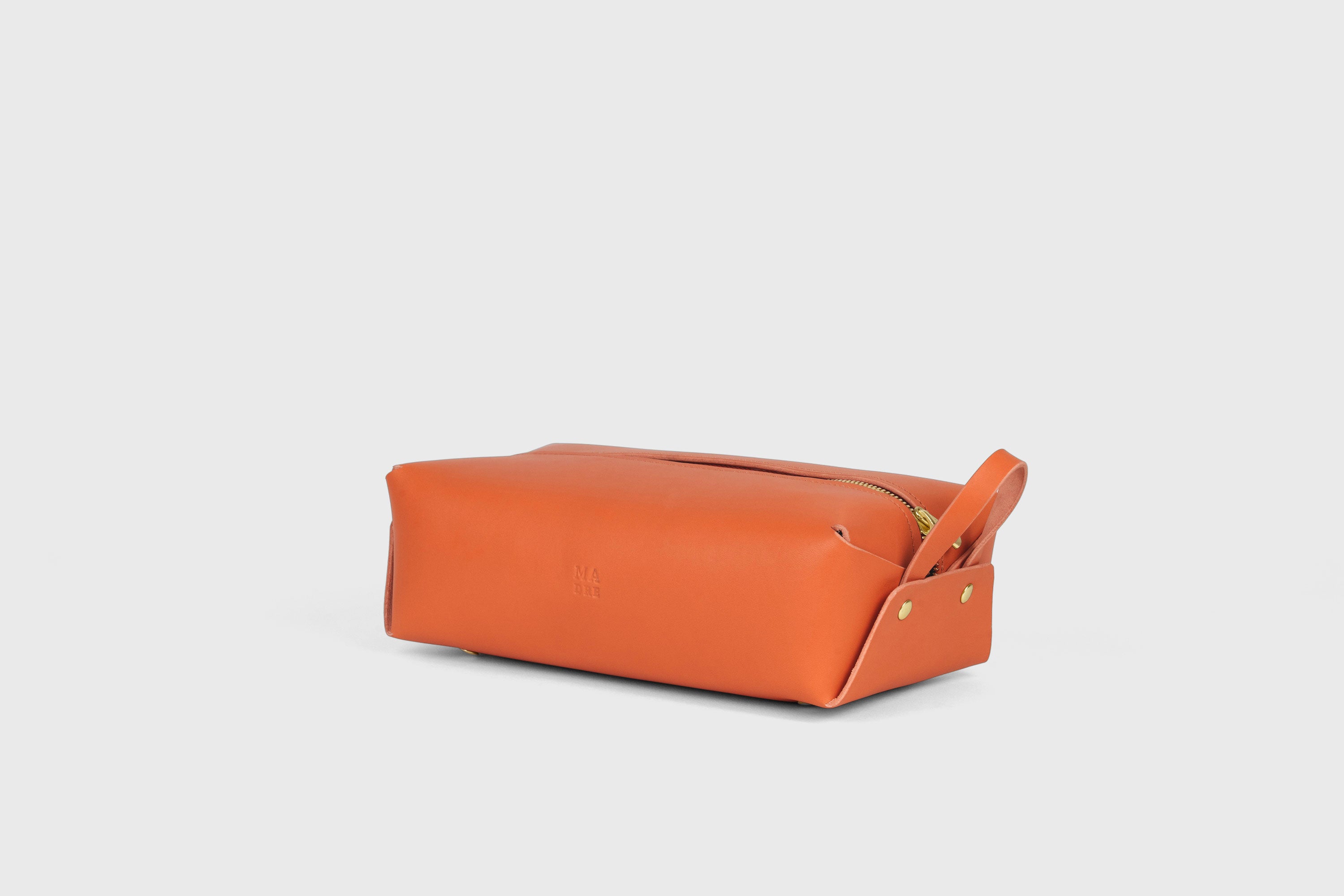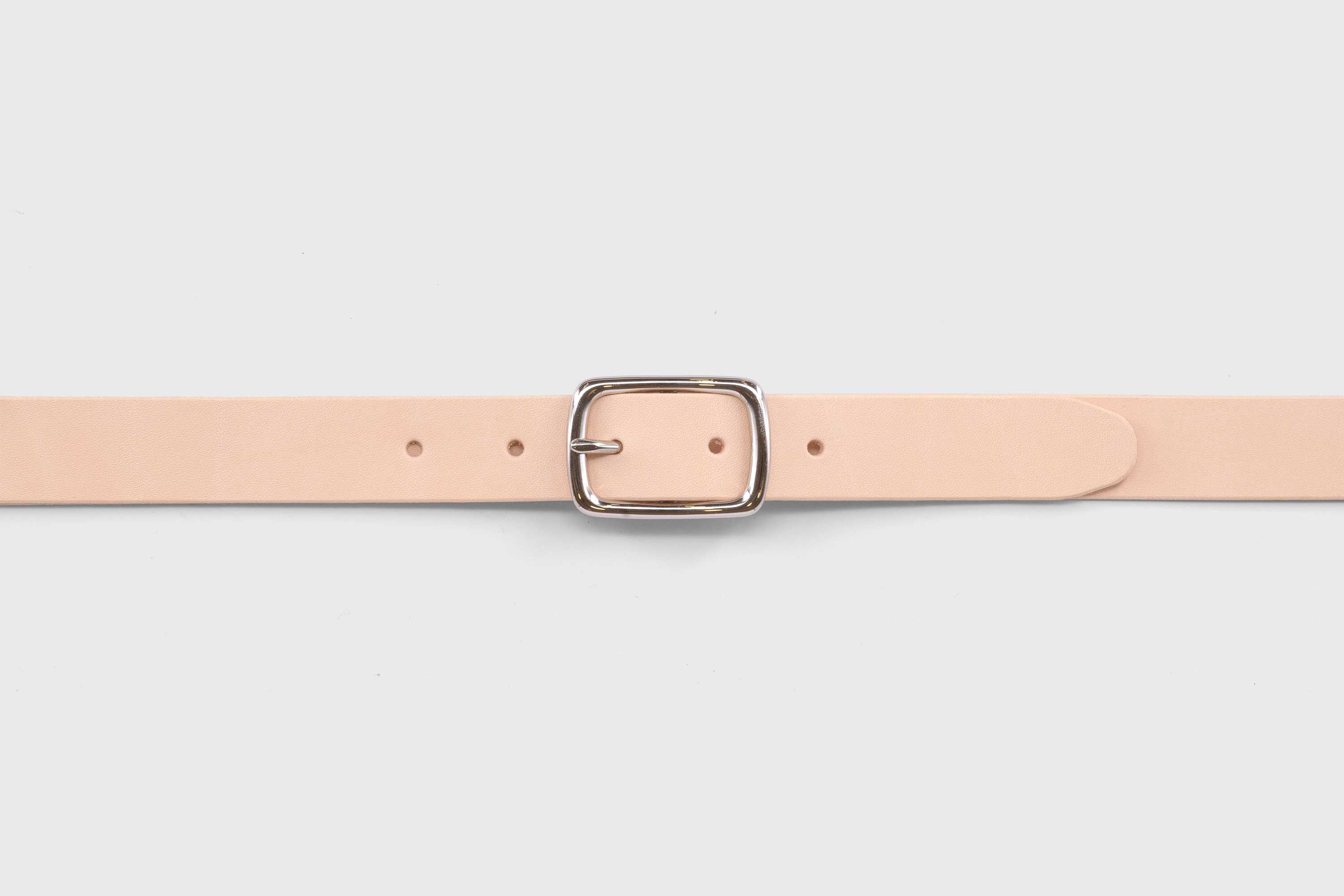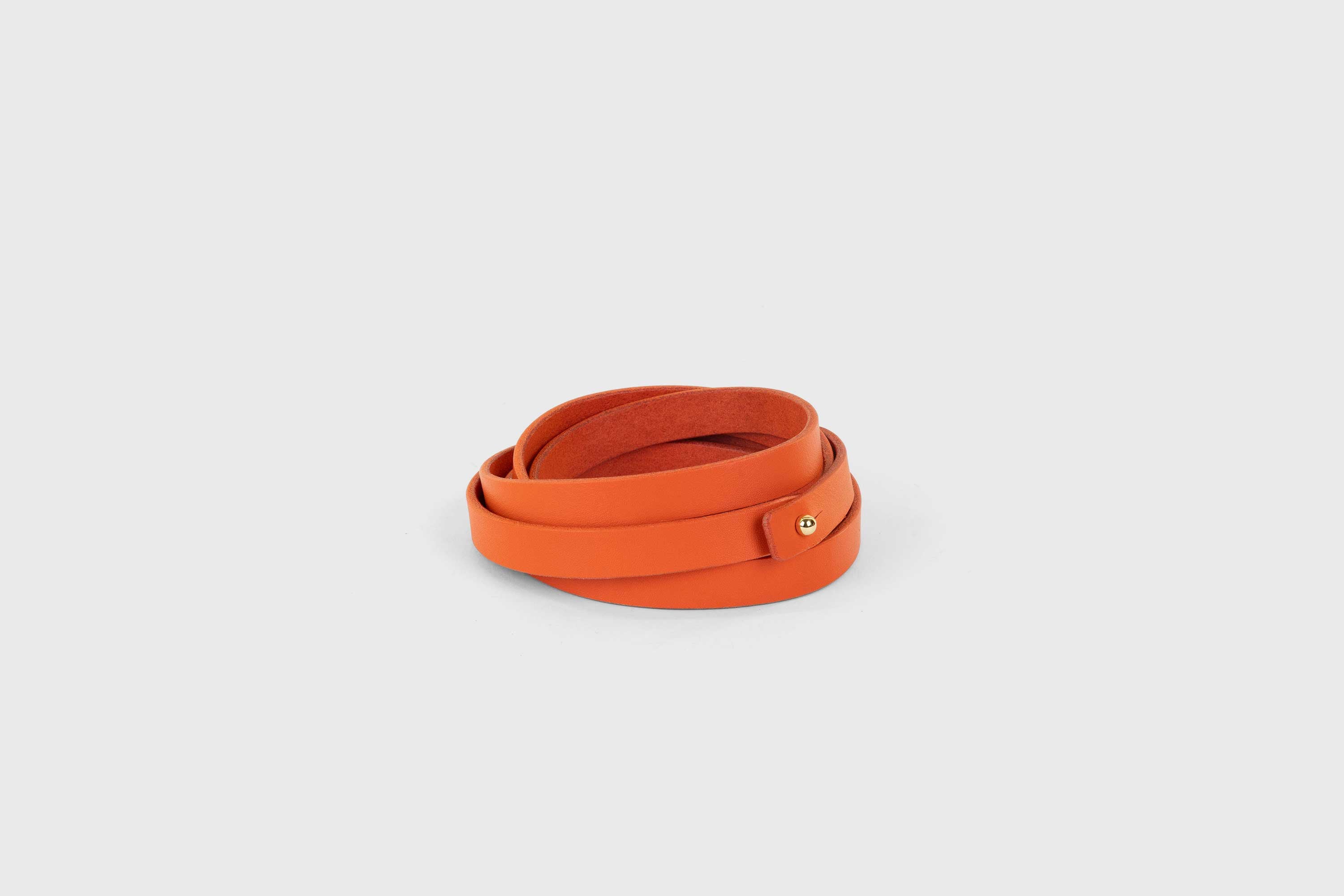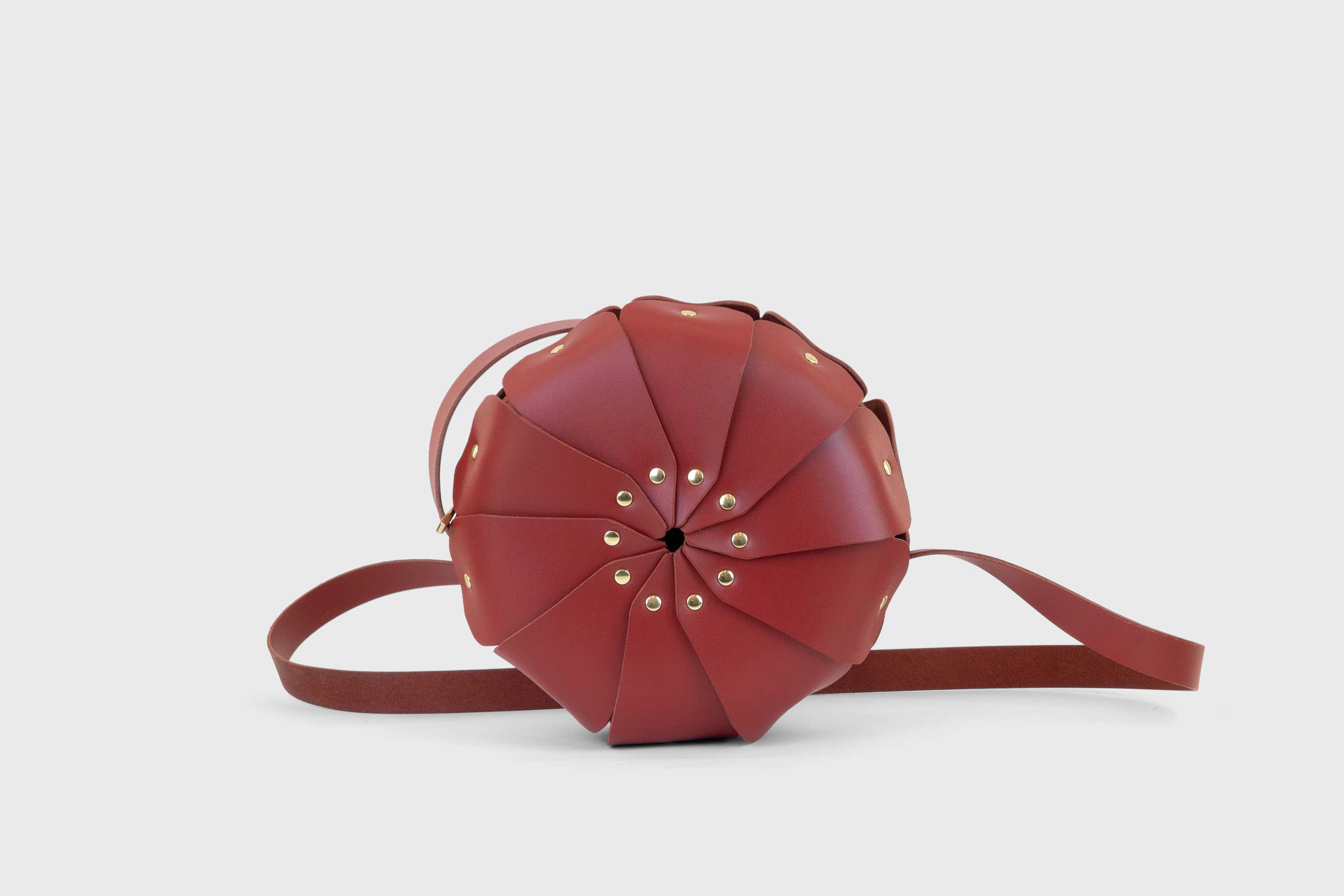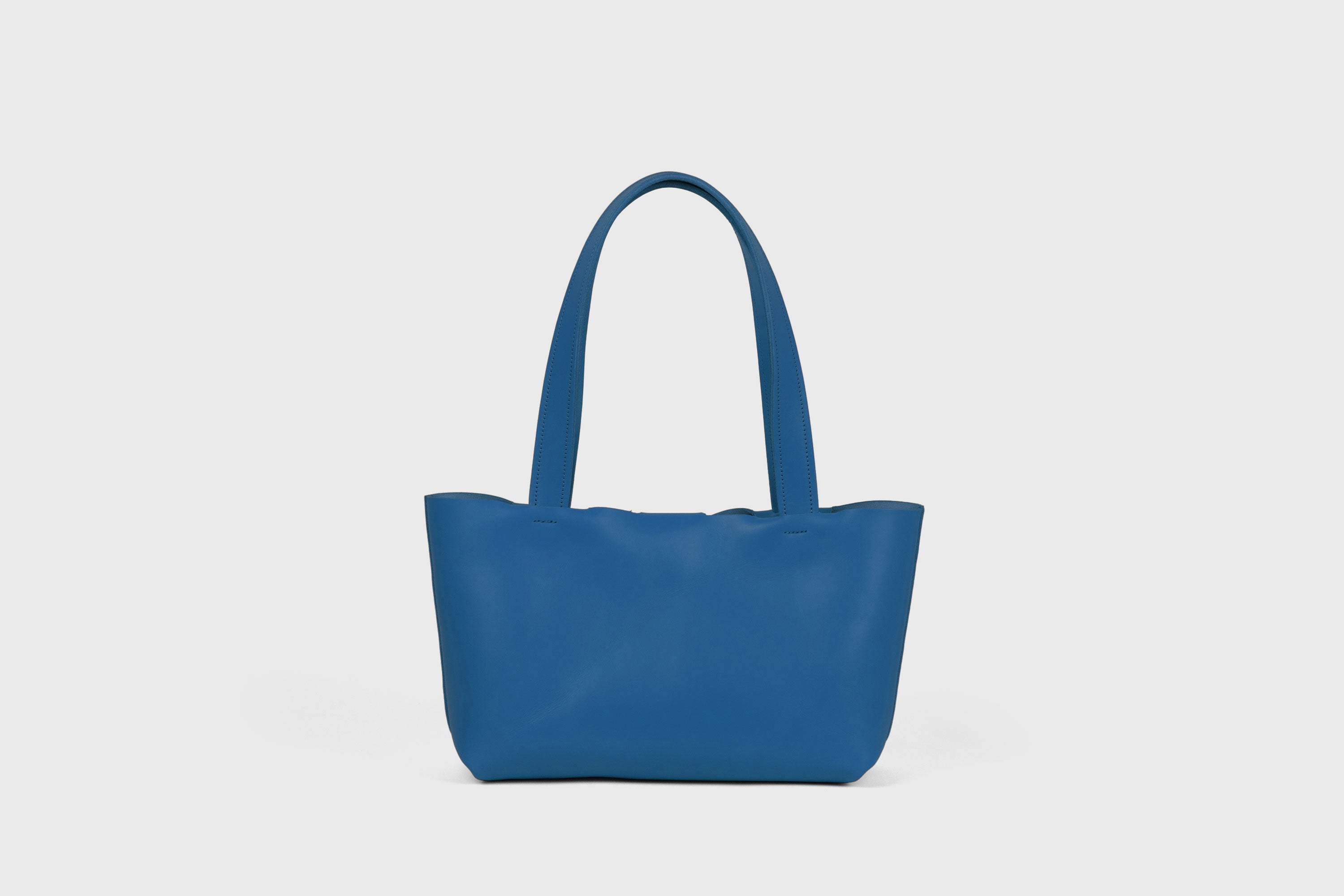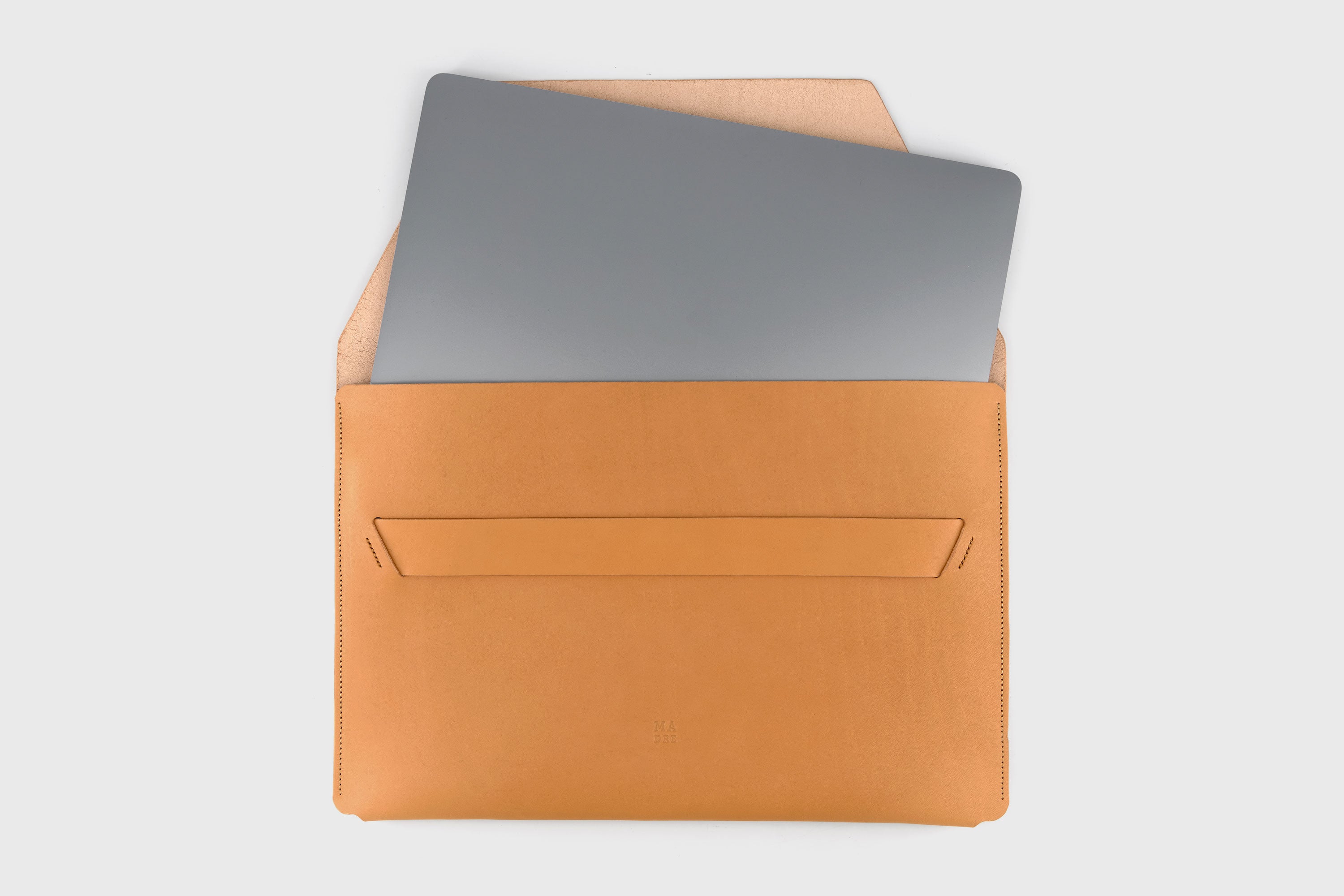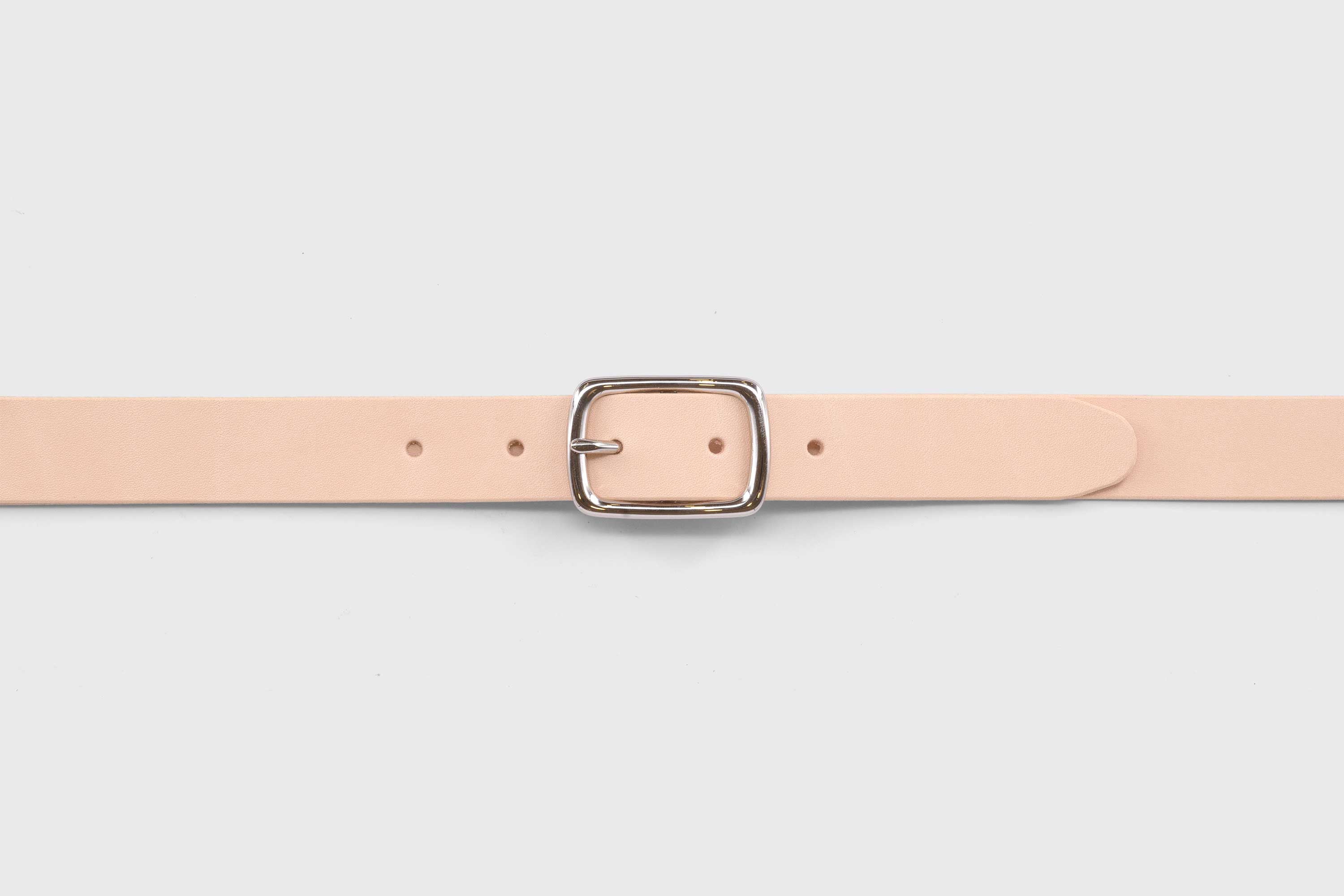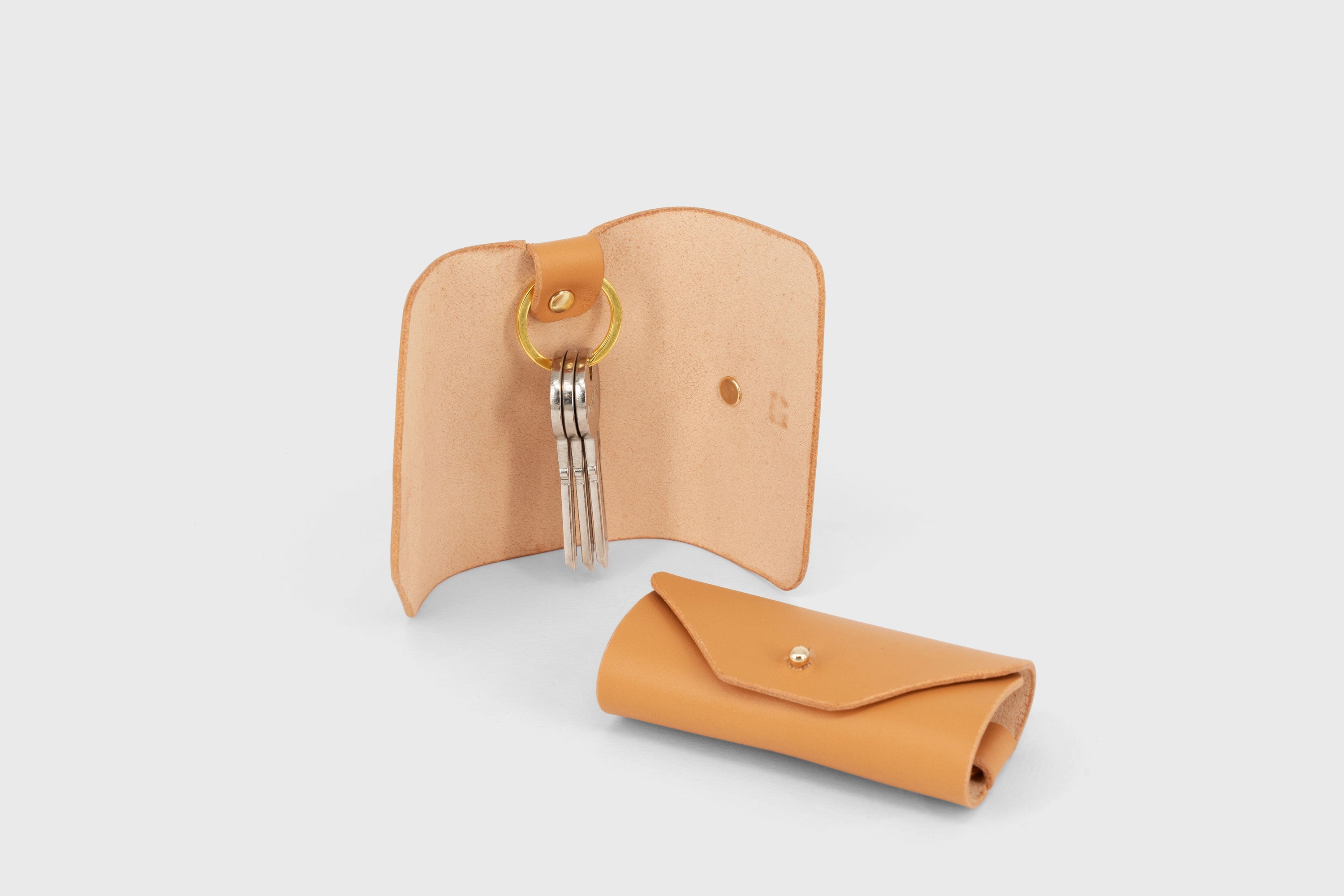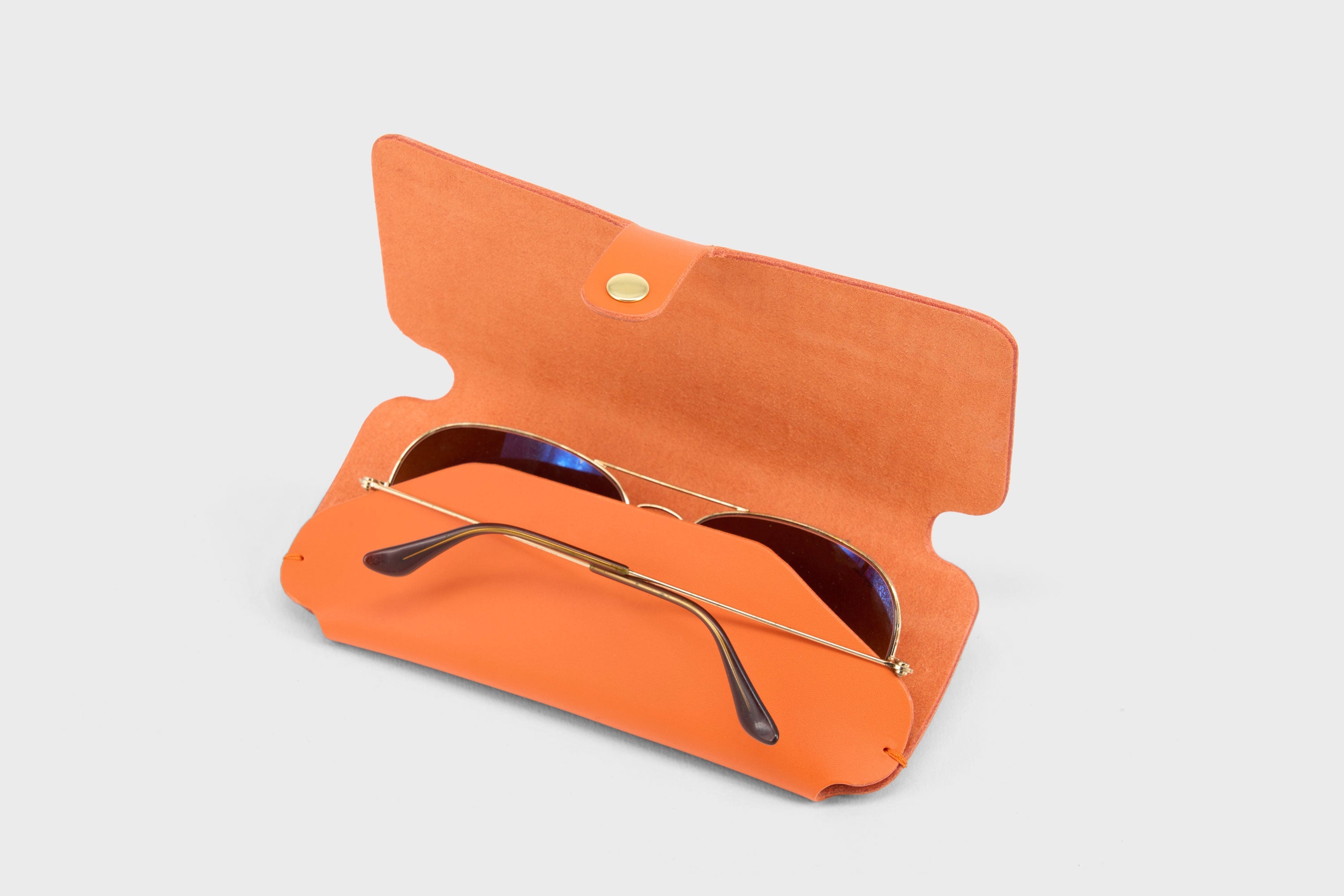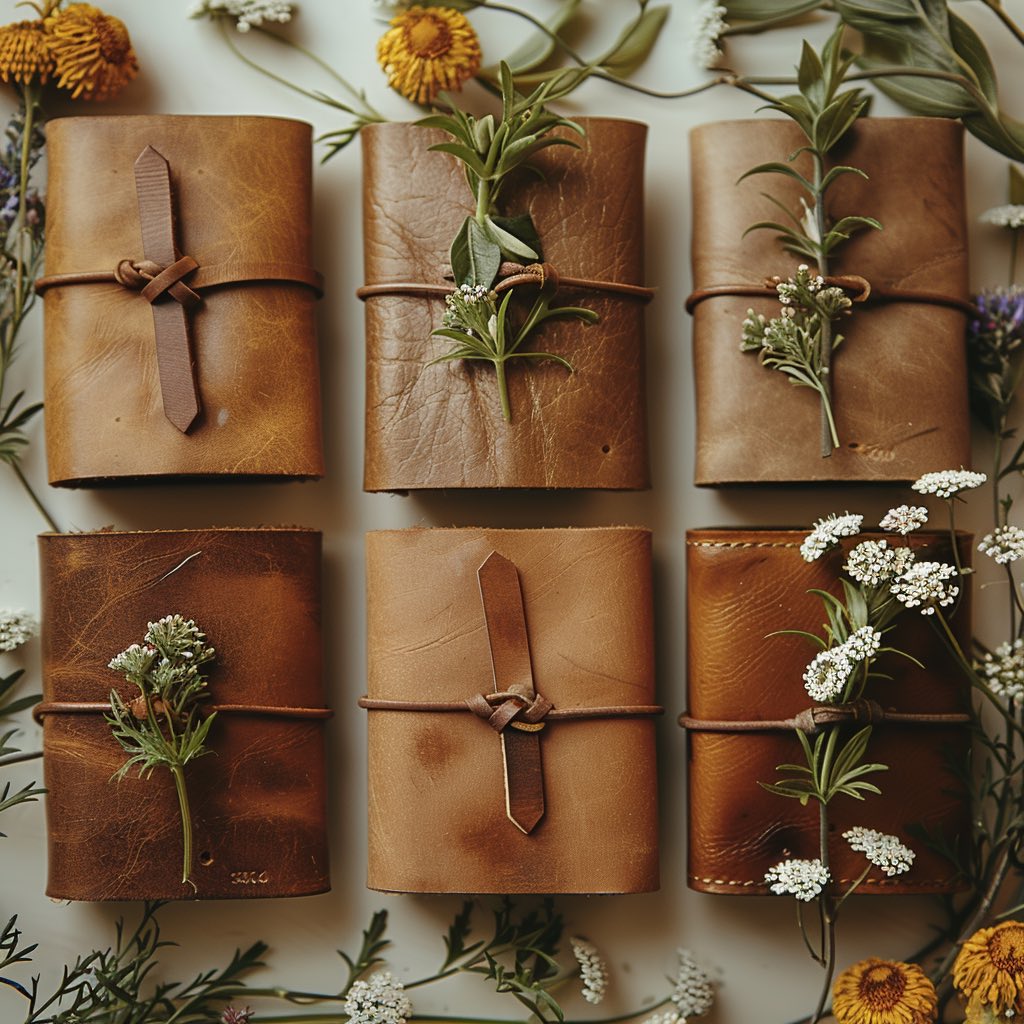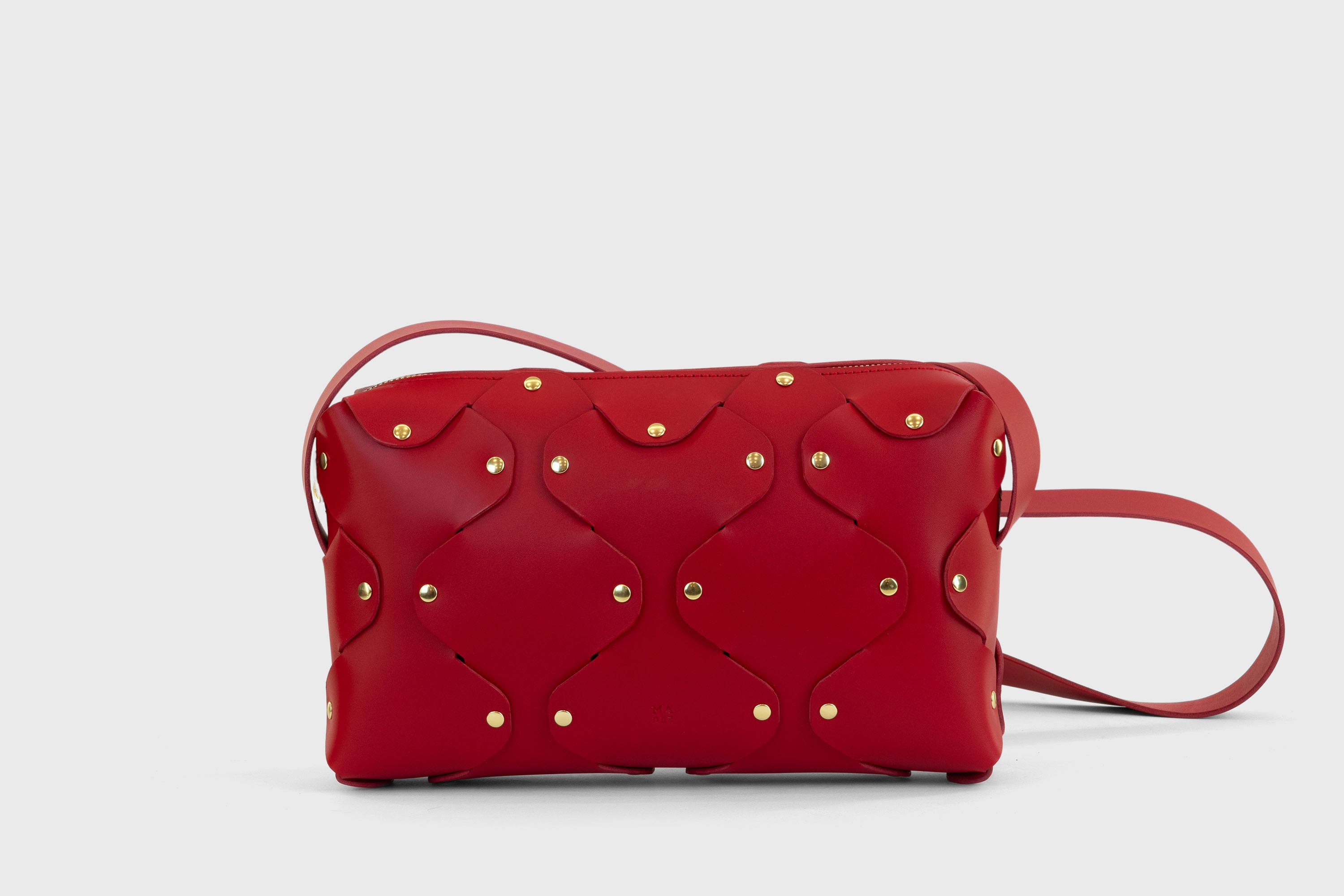
Italian Leather: Everything You Need To Know
What is Italian Leather?

History and Tradition of Italian Leather
Italian leather has long been synonymous with impeccable quality and enduring elegance, a testament to Italy's deep-rooted history in the art of leather craftsmanship. This tradition dates back to the Middle Ages, when Italian tanneries began to flourish, particularly in regions like Tuscany, where the abundant presence of oak and chestnut trees provided essential tannins for the leather tanning process. These early artisans laid the foundation for what would become a world-renowned symbol of luxury and craftsmanship.
The Renaissance era witnessed a significant evolution in Italian leather making, as artisans experimented with new techniques and treatments, elevating their craft to unprecedented heights. Cities such as Florence and Venice emerged as hubs of leather production, attracting patrons from across Europe with their exquisite handcrafted leather goods. The skills and secrets of this trade have been passed down through generations, preserving the traditional methods that distinguish Italian leather from all others.
Italian leather's reputation is not just built on its history but also on the dedication to quality and detail ingrained in its artisans. The traditional vegetable tanning process, a method that has been refined over centuries, involves using natural tannins extracted from plants to treat the leather. This not only imparts a unique softness and durability to the leather but also ensures that it ages beautifully, developing a rich patina over time that is highly sought after.
Today, the regions famous for leather production continue to honor these time-honored techniques, blending them seamlessly with innovation to meet modern demands. Tuscany, in particular, is home to numerous tanneries and workshops where the legacy of Italian leather craftsmanship is kept alive. These artisans take pride in their work, ensuring that each piece of leather is treated with the utmost care, from the selection of the finest hides to the meticulous finishing touches.
The enduring appeal of Italian leather lies in this blend of history, tradition, and craftsmanship. It represents a commitment to quality that has been cherished for centuries, a hallmark of luxury that transcends fashion trends. As we explore the characteristics that make Italian leather stand out, it's clear that its global reputation is well-deserved. The story of Italian leather is not just about the material itself but about the people, the places, and the passion that bring it to life.
Why Italian Leather Stands Out
Italian leather is renowned for its exceptional quality, luxury, and craftsmanship. Its global recognition goes beyond the "Made in Italy" label, anchored in its unique features that separate it from other leathers. Here, we examine what makes Italian leather a preferred selection among fashion lovers and luxury admirers.
The Texture and Durability
First, the feel of Italian leather stands out. It's soft but also strong, giving a touch experience you can immediately tell apart. The reason it feels so good comes from the careful tanning processes Italian makers use. Instead of the quick ways many others make leather, Italian leather often goes through older methods like vegetable tanning. This not only makes the leather softer but also more durable. Plus, this way of tanning lets the leather get better with age, gaining a deep, attractive color that many leather lovers look for.
The Tanning Process:
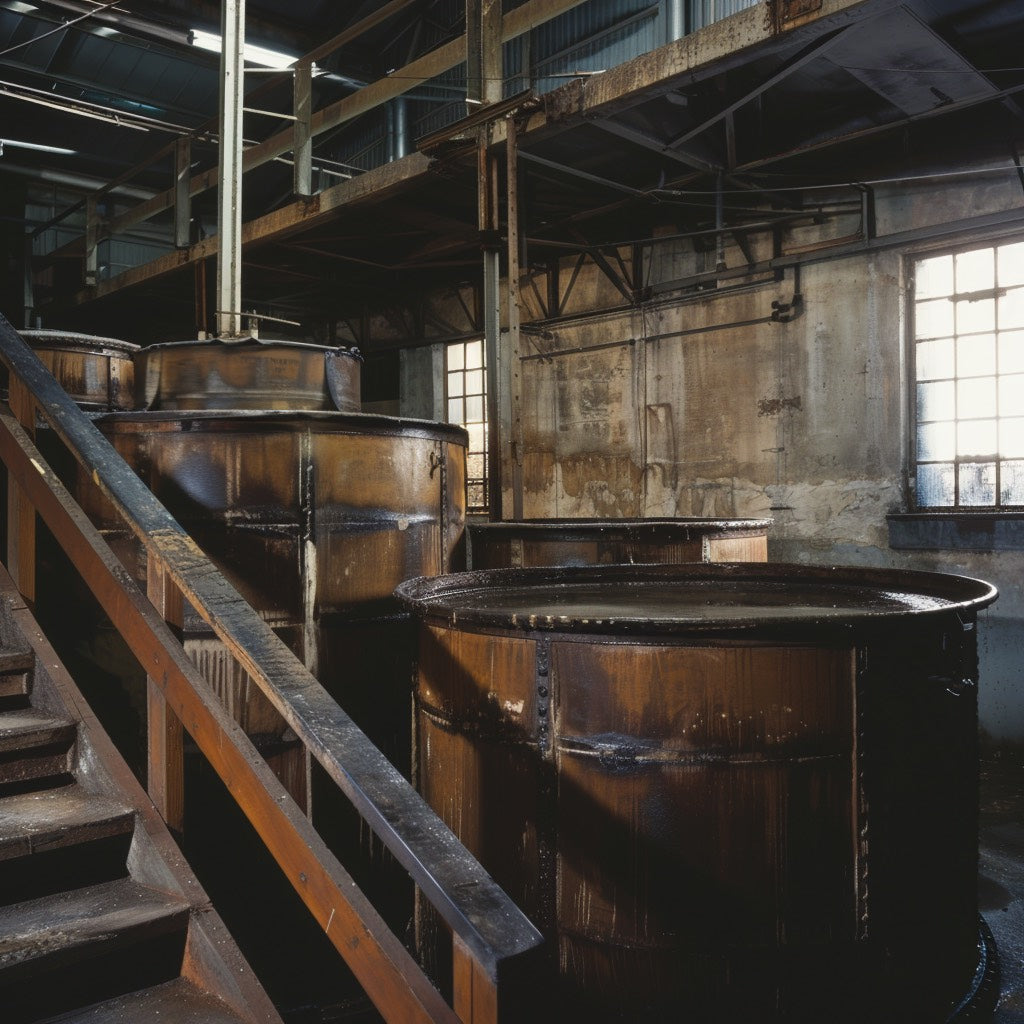
The tanning process is where Italian leather truly shines. Italy is home to some of the world's oldest and most prestigious tanneries, where age-old techniques meet modern innovations. Vegetable tanning, a method that dates back thousands of years, uses tannins extracted from plant sources to treat the leather. This eco-friendly approach not only gives Italian leather its distinctive texture and color but also makes it hypoallergenic and environmentally sustainable.
Innovation plays a key role in elevating the quality of Italian leather. Tanneries in Italy are at the forefront of experimenting with new tanning methods and finishes, ensuring the leather is not only beautiful but also resistant to wear and tear. The result is a material that maintains its integrity and appearance over time, making it a perfect choice for high-quality fashion items and accessories.
Different Types of Italian Leather
Italian leather comes in various grades and types, each with its unique qualities. Full-grain leather, considered the highest quality, uses the entire grain of hide, retaining all the natural imperfections and strength. This type of leather is the most durable and resistant to wear, making it an ideal choice for luxury products that stand the test of time.
Top-grain leather, another popular choice, is slightly refined, with the very top layer of the hide removed. This process gives the leather a more uniform appearance while still maintaining much of its durability and texture. Top-grain Italian leather is often used in high-end leather goods where both comfort and aesthetics are paramount.
The Making of Italian Leather
Italian leather's transformation from raw hide to a luxurious material highlights Italy's long history of excellence in leather making. This process, perfected over hundreds of years, shows the commitment to quality that Italian craftsmen and tanneries are famous for. Here, we look at the careful steps taken to create Italian leather, focusing on how tradition and new techniques come together in the Italian industry.
Sourcing the Hides
The journey begins with the careful selection of raw hides. Italian leather producers often choose the highest quality hides, typically from local or European sources, to ensure the final product meets the highest standards of excellence. This selection process is crucial, as the quality of the hide directly influences the quality of the finished leather.
Tanning: The Heart of Leather Making
Tanning is the core process that transforms raw hides into durable, flexible leather. Italian tanneries are renowned for their use of vegetable tanning, a method that dates back thousands of years. This process involves treating the hides with natural tannins found in tree barks and other plant materials, a practice that not only imparts a unique character to the leather but is also environmentally friendly.
Vegetable tanning is a slow, artisanal process that can take up to several months to complete. However, the result is a leather that is rich in color, has a distinct natural aroma, and possesses a unique ability to age gracefully, developing a deeper character over time.
Dyeing and Finishing: Adding Character and Beauty
After tanning, the leather is dyed and finished. This step is where the leather's color and texture are enhanced. Italian leather goods are known for their vibrant colors and smooth finishes, achieved through a combination of traditional dyeing techniques and modern technological advancements. The dyes used are carefully selected to ensure depth of color and durability, while the finishing process can include anything from polishing to embossing, adding to the leather's aesthetic and protective qualities.
Craftsmanship: The Human Touch
What really makes Italian leather stand out is the unmatched craftsmanship. Artisans, who have honed their skills over many years, handcraft leather goods using methods passed down from one generation to the next. This personal touch is clear in the accuracy of the stitching, the smoothness of the cuts, and the attention given to assembling the final product. Every piece showcases the artisan's expertise and commitment to making something truly outstanding.
Environmental Responsibility
Sustainability is a growing focus in the Italian leather industry. Tanneries are increasingly adopting practices that minimize environmental impact, such as recycling water and using eco-friendly chemicals. The commitment to sustainability not only ensures the preservation of Italy's natural beauty but also appeals to eco-conscious consumers worldwide.
Italian Leather in Fashion and Design
Italian leather's influence extends far beyond the tanneries of Italy, making a significant mark on the world of fashion and design. This material, celebrated for its quality and beauty, is a cornerstone of luxury fashion, furnishing, and even automotive interiors. This section highlights the pivotal role of Italian leather in various industries, showcasing how it elevates products with its elegance and durability.
Italian Leather in Luxury Fashion
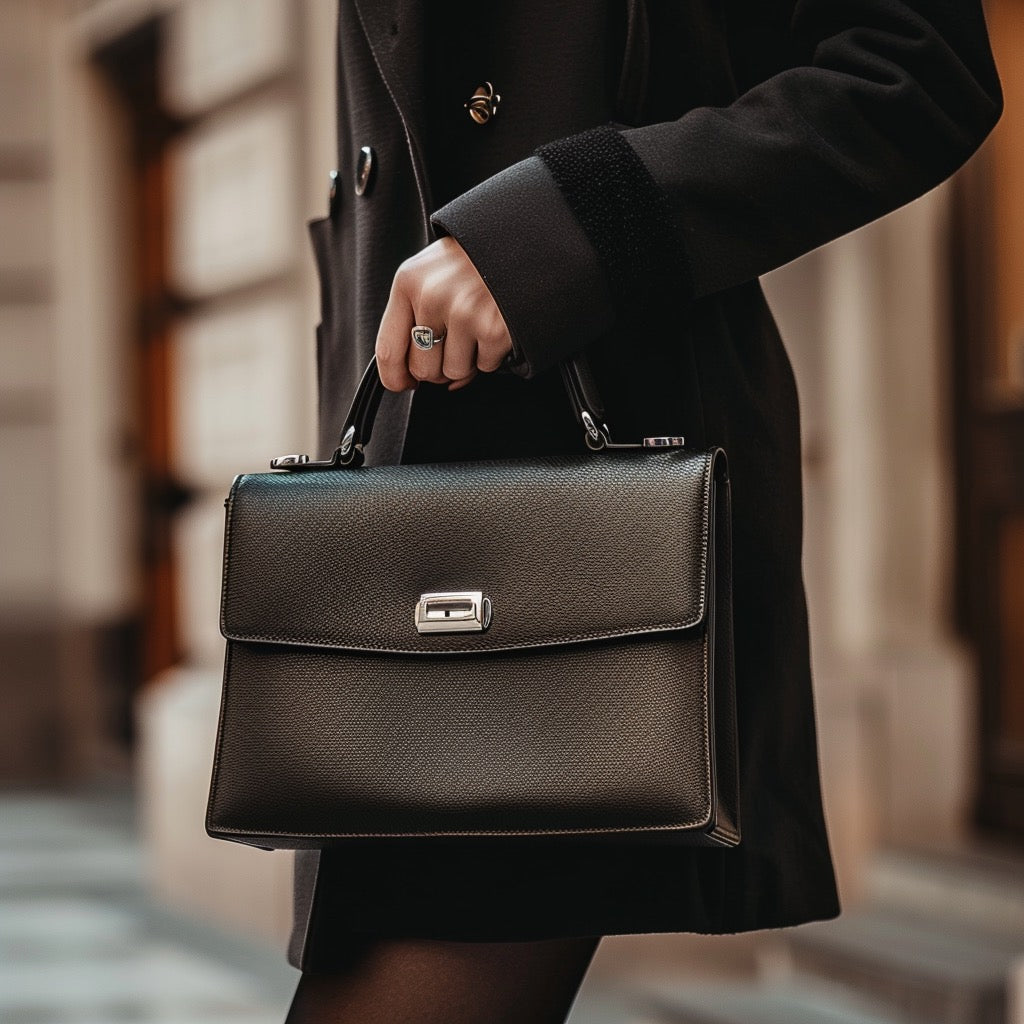
In the realm of high fashion, Italian leather is synonymous with luxury and sophistication. Renowned designers and fashion houses often turn to Italian leather for their most iconic pieces – from handbags and shoes to jackets and belts. The material's versatility and exceptional quality allow for creative expression, resulting in timeless pieces that signify status and craftsmanship. Italian leather accessories are particularly prized for their ability to blend form and function, offering durability without sacrificing style.
Collaborations with Global Fashion Brands
Italian leather artisans and manufacturers frequently collaborate with global fashion brands, bringing a touch of Italian craftsmanship to the international stage. These partnerships often lead to innovative designs that combine traditional Italian techniques with contemporary fashion trends. The result is a fusion of cultures and ideas, manifesting in unique pieces that are coveted worldwide. These collaborations not only highlight the versatility of Italian leather but also underscore Italy's influence on global fashion trends.
Beyond Fashion: Italian Leather in Furniture and Interiors
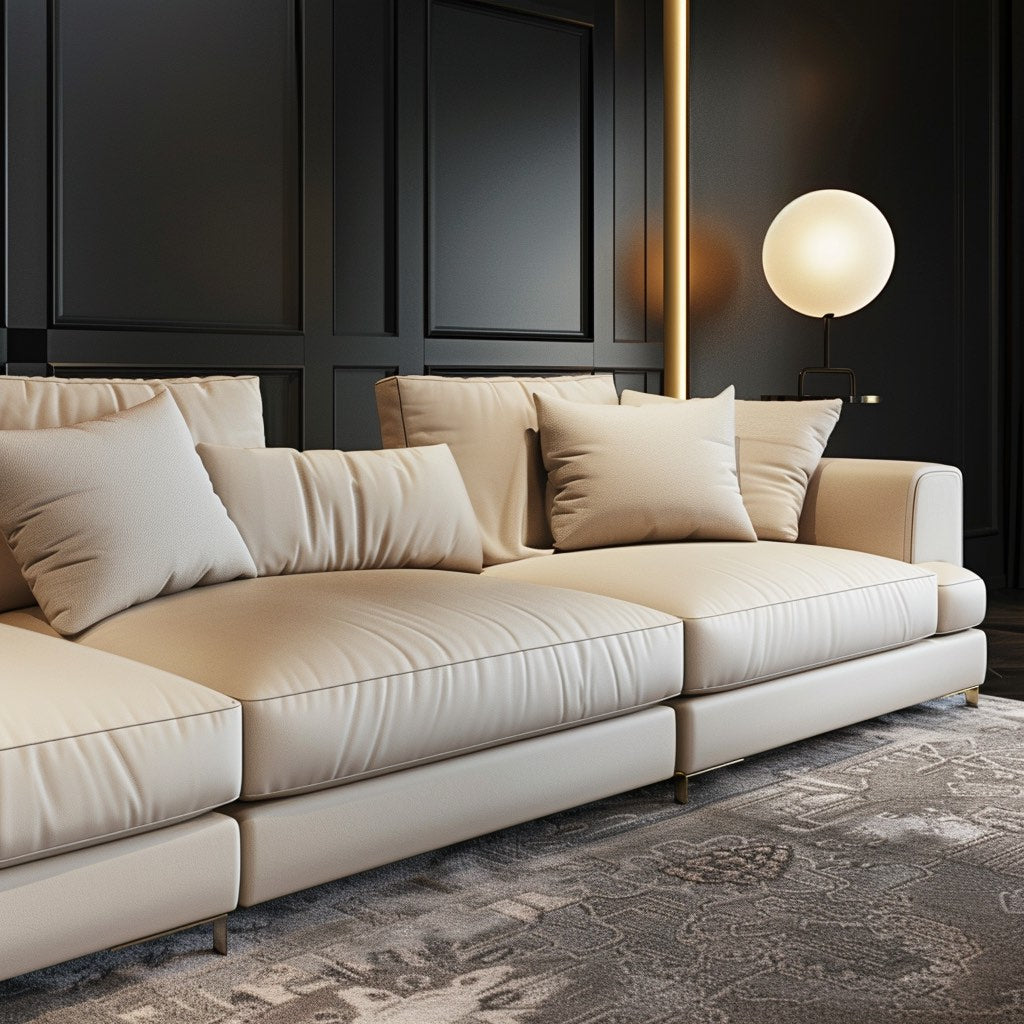
Italian leather's appeal is not confined to the fashion industry; it is also a preferred material in luxury furniture and automotive interiors. The leather's durability and the rich patina it develops over time make it an ideal choice for high-end sofas, chairs, and car seats. In the world of interior design, Italian leather signifies comfort and elegance, offering a sophisticated touch to any space. Its natural texture and warmth add a level of luxury and refinement that synthetic materials cannot replicate.
Innovations in Leather Design
The Italian leather industry continues to innovate, pushing the boundaries of what leather can achieve in fashion and design. Advances in tanning and finishing processes have led to the development of leathers that are more resistant to water, stains, and fading, expanding the possibilities for use in various applications. Additionally, the exploration of new textures and colors has led to a broader palette for designers to work with, enabling more creative and vibrant expressions of style.
Sustainability and Ethical Fashion
In response to growing concerns about sustainability and ethical production practices, the Italian leather industry is at the forefront of developing eco-friendly and socially responsible manufacturing processes. This commitment to sustainability not only enhances the appeal of Italian leather in the eyes of eco-conscious consumers but also sets a standard for the industry worldwide. By prioritizing environmental stewardship and ethical labor practices, Italian leather producers are ensuring the long-term viability and desirability of their products.
Physical Characteristics of Italian Leather
Italian leather is distinguished by several physical characteristics that contribute to its reputation as one of the finest materials in the luxury market. These traits are a testament to the traditional methods of production, the quality of the raw materials used, and the skill of Italian artisans. Here’s a closer look at the physical qualities that set Italian leather apart:
Texture
Italian leather is celebrated for its exceptionally smooth texture. This is a direct result of the vegetable tanning process it undergoes, which preserves the natural fibers of the hide, allowing them to retain their softness and flexibility. This process, combined with the skillful handling by artisans, results in a leather that is not only pleasing to touch but also durable and resistant to daily wear.
Color Depth and Richness
The color of Italian leather is another distinguishing feature. Unlike leathers treated with synthetic tanning agents, Italian leather boasts deep, rich colors with a natural variance that adds to its unique appeal. The vegetable tanning process allows the leather to absorb dyes deeply and evenly, resulting in a vibrant color that can withstand fading over time. Moreover, this method ensures that each piece of leather develops a distinctive patina, enhancing its aesthetic appeal as it ages.
Flexibility and Strength
Despite its softness, Italian leather is remarkably strong and flexible. This balance is achieved through the careful selection of hides and the precise control of the tanning process. The natural elasticity of the leather allows it to bend and move without losing shape or breaking, making it ideal for a wide range of applications, from delicate handbags to sturdy furniture.
Breathability
Italian leather is naturally breathable due to the porous nature of the vegetable-tanned hide. This characteristic makes it comfortable for use in clothing and footwear, as it allows air to circulate and prevents the build-up of moisture and sweat. The breathability of Italian leather contributes to its comfort and the longevity of the products made from it, by helping to preserve the material's integrity over time.
Natural Aroma
The natural tanning process imparts Italian leather with a distinct and pleasant aroma. Unlike synthetic materials or leathers treated with chemical agents, which can have a plastic-like or chemical smell, Italian leather's scent is earthy and organic. This aroma is often associated with quality and authenticity in leather goods.
Water and Stain Resistance
Italian leather, especially when treated properly, displays a significant degree of resistance to water and stains. The oils and waxes used in the finishing process create a protective barrier that repels moisture and prevents stains from penetrating deeply into the leather. This feature is particularly valuable in preserving the leather’s appearance and functionality over time.
How to Identify Genuine Italian Leather
In a market flooded with imitations and varying qualities of leather, discerning the authenticity of Italian leather is crucial for consumers seeking the genuine article. Italian leather, celebrated for its superior quality and craftsmanship, stands as a hallmark of luxury and durability. This section not only guides you through identifying genuine Italian leather but also addresses common questions about leather authenticity.
What is 100% Genuine Leather?
The term "100% genuine leather" is often used to signify that a product is made from real leather as opposed to synthetic materials. However, it's important to note that this label doesn't speak to the quality grade of the leather. Leather quality can vary significantly, with Italian leather being at the top tier due to its traditional tanning processes and artisanal craftsmanship. Genuine Italian leather is sourced from the highest quality hides and undergoes meticulous tanning processes to enhance its durability, texture, and aging properties.
Is Italian Leather Fake Leather?
Italian leather is far from being "fake leather." It stands out for its quality, using high-quality hides and traditional tanning methods that have been perfected over centuries. The confusion might come from the market being flooded with products falsely labeled as Italian leather. Genuine Italian leather offers a level of craftsmanship and quality that synthetic leathers or lower-quality products just can't match.
Tips for Identifying Genuine Italian Leather
Look for the 'Made in Italy' Mark
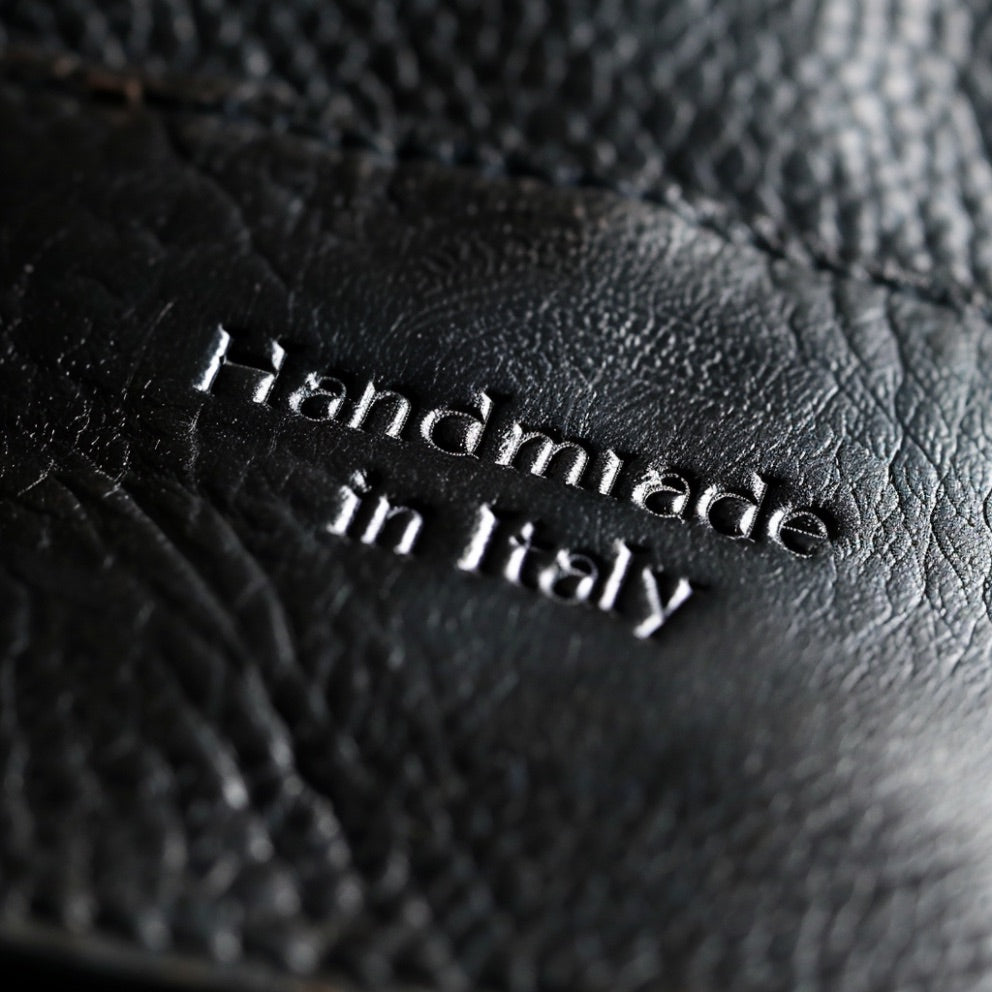
One of the most straightforward ways to identify genuine Italian leather is to look for products that are explicitly labeled as "Made in Italy." This designation is protected by Italian law and signifies that the product was made in Italy, adhering to the high standards of production and craftsmanship associated with Italian leather goods. This simply indicates that some parts of the article were made in Italy, but it doesn't guarantee that the leather itself is from Italy. Therefore, more investigation is required.
Examine the Texture and Smell
Genuine Italian leather has a unique texture and smell that are hard to replicate. The leather should feel soft and flexible, yet durable. It should have a rich, natural scent, unlike synthetic materials or lower-quality leathers that might have a chemical smell. The natural imperfections and grain patterns on the leather's surface are also indicators of quality, showing that the leather has not been overly processed to remove these characteristics. Yet, there are many top-notch tanneries outside of Italy, such as our tanneries in Spain, where the texture and smell would be quite similar. To pinpoint the origin, more research is needed.
Check the Price
While price alone is not always a definitive indicator of quality, genuine Italian leather products typically come with a higher price tag due to the quality of materials and craftsmanship involved in their production. If a product claims to be Italian leather but is priced suspiciously low, it may be a sign that it's not genuine.
Research the Brand
Reputable brands that specialize in Italian leather goods often provide detailed information about their sourcing and manufacturing processes. Researching the brand and reading about their commitment to quality can help reassure you of the authenticity of their Italian leather products. Looking closely at the tags can reveal whether all the leather, or only a portion of it, is sourced from Italy. This small detail can make a big difference, as it helps identify the true origins of the leather used in the product.
Why Does Italian Leather Smell So Good?
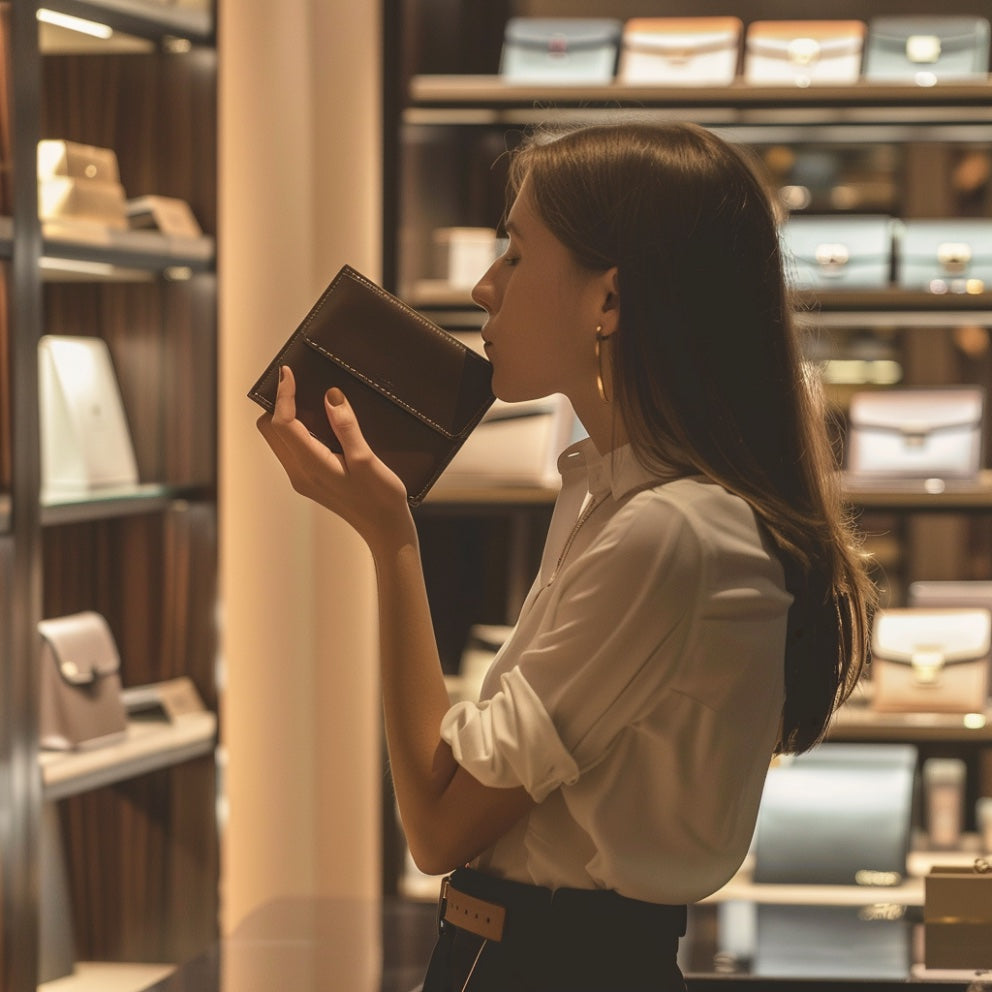
A significant factor contributing to the distinctive scent of Italian leather is the vegetable tanning process. Unlike chemical tanning methods, which can leave a harsh or artificial odor, vegetable tanning uses natural tannins derived from tree bark, fruits, and leaves. This method not only imparts a rich texture and color to the leather but also leaves it with a natural, earthy fragrance that many find appealing. The absence of harsh chemicals means the leather retains a smell that is closer to nature, reminiscent of woodsy and floral notes.
What is the Best Leather in Italy?
In the luxurious world of Italian leather, you might wonder which type stands out as the best. Italy is famous for its rich history in leather making, producing various kinds of leather that are all celebrated for their quality and unique traits. But the "best" leather really depends on what you're looking for, such as how you plan to use it, your personal taste, and the qualities you find most important in leather. Even though preferences can vary, there are a few types of Italian leather that are consistently recognized for their top-notch quality and craftsmanship.
Vegetable-Tanned Leather
Vegetable-tanned leather is often seen as one of the top types of leather from Italy. This leather is made using natural ingredients from plants, like tree bark and leaves, a method that's been perfected over hundreds of years, especially in places like Tuscany. It gives the leather beautiful, earthy colors and a special feel, and it gets even better looking as it ages. This type of leather is perfect for high-quality items like bags, wallets, and belts because it's strong, looks natural, and is good for the environment.
Full-Grain Leather
Full-grain leather is the cream of the crop when it comes to leather quality. It includes the outermost layer of the hide, showing off the natural grain with very little treatment. This means the leather keeps its toughness and lasts a long time. Full-grain leather is not as common because it's more expensive to make and requires hides without many marks, as the natural surface is what you see. Items made from full-grain Italian leather are valued for how long they last and how they get more beautiful with wear, making it a favorite for luxury products.
Calfskin Leather
Italian calfskin leather is known for being incredibly soft, stylish, and light, which is why it's a top choice for high-fashion accessories. Calfskin is more flexible and lighter than leather from older animals, offering a luxury feel that's hard to beat. It's often used for designer bags, shoes, and jackets, where its smooth finish and elegant look are highly desired.
Cordovan Leather
Cordovan, or "Shell Cordovan," is a special and luxurious leather made from the back part of a horse hide. It's known for its smooth, shiny finish and deep color. Cordovan leather is thick and durable, almost waterproof, and is mainly used for high-end shoes and small leather goods. Making Cordovan leather takes a lot of work and time, which makes it rare and pricey. Cordovan leather, famous for its shine and strength, originally comes from Cordoba, as its name suggests. Nowadays, it's also made by top tanneries in Italy and the well-known Horween tannery in the US. The story behind its name adds to its charm, linking it to a long history of craftsmanship in Cordoba.
Is Italian Leather the Best?
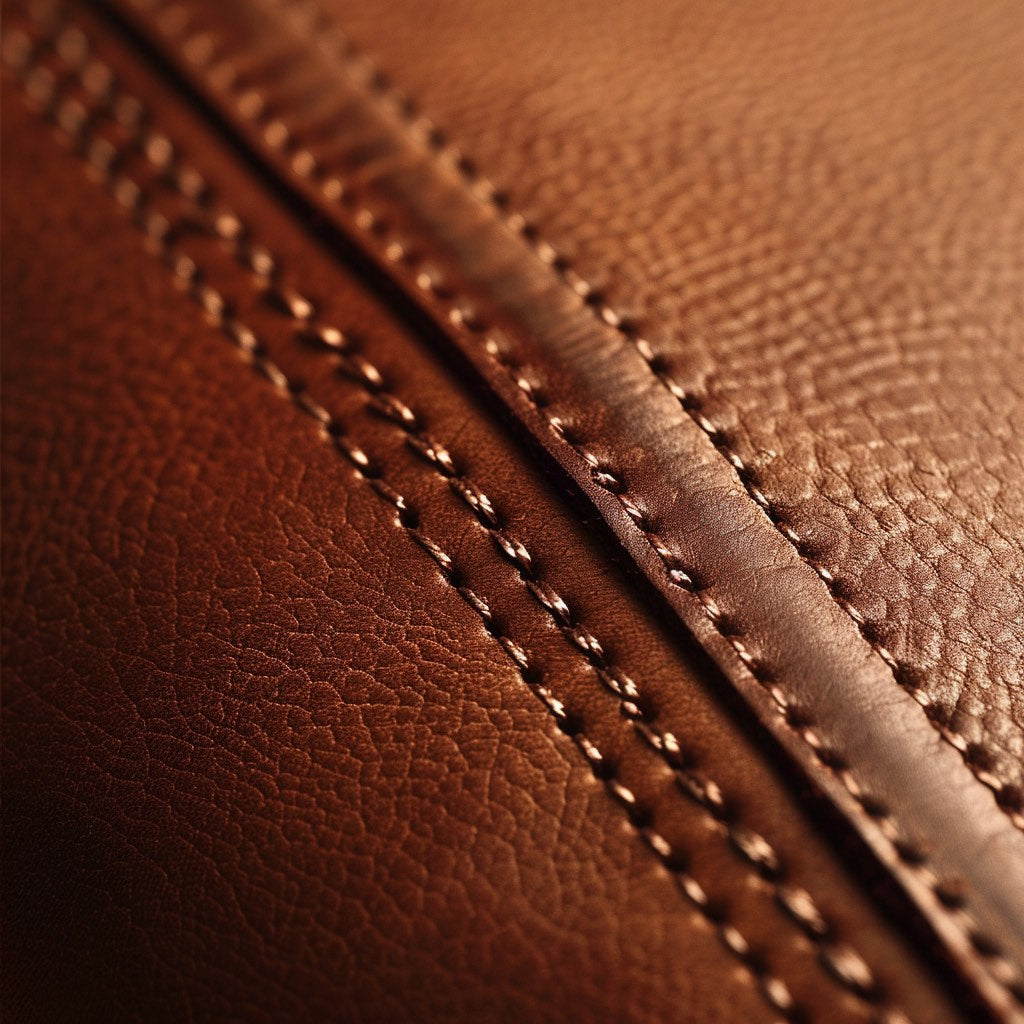
While "the best" can be subjective, depending on personal preferences and specific needs, Italian leather certainly ranks at the top for many reasons. Its unparalleled craftsmanship, the quality of materials, the traditional yet innovative tanning processes, and its commitment to sustainability all contribute to its reputation as the best quality leather in the world.
However, it's also important to note that other countries produce high-quality leather, each with its own unique characteristics and strengths. The key is to know what you're looking for in a leather product and to appreciate the craftsmanship and history behind it.
Detailed Craftsmanship
What sets Italian leather apart is the unmatched craftsmanship behind it. Artisans in Italy are masters of their trade, inheriting techniques that have been perfected and passed down through generations. This deep-rooted heritage in leatherworking ensures that every piece of Italian leather is not just made but crafted with an attention to detail that's rare to find.
Superior Tanning Processes
The exceptional tanning techniques, especially vegetable tanning, are the defining feature of high-quality Italian leather. The leather develops a natural resiliency and a deep patina through this historical process. The lengthy procedure yields leather that is both aesthetically pleasing and long-lasting, as well as being kind to the environment.
Quality Over Quantity
Quality is given precedence above quantity in Italian leather production. They take great care while choosing hides, and they commit to producing goods that are up to par. Because of their emphasis on quality, Italian leather goods are not only expensive but also strong and long-lasting, retaining their elegance even after years of use.
Eco-Friendly Practices
In today’s world, the best quality isn't just about aesthetics or durability; it's also about sustainability. Italian leather stands out for its eco-friendly practices, especially with vegetable-tanned leather. This commitment to environmentally conscious methods adds another layer of value, making Italian leather a choice that feels good not just in quality but also in ethical standards.
Global Recognition
Italian leather’s reputation for being the best isn't unfounded. It's the preferred choice of top fashion houses and luxury car manufacturers for its blend of luxury, durability, and timeless appeal. This global recognition is a testament to its superior quality and the high regard it holds in industries that prioritise excellence.
Is Italian Leather Worth It?
When shopping for leather goods, the prestige of Italian leather often comes with a higher price tag. This leads many to ask: Is Italian leather really worth the investment? Let's explore what sets Italian leather apart and whether it justifies its premium status.
Longevity and Durability
One of the biggest selling points of Italian leather is its exceptional durability. Products made from this high-quality material are built to last, often becoming more beautiful with age. If you're looking for a leather item that will stand the test of time, Italian leather delivers on this promise. Over the years, what might seem like a high upfront cost spreads out, offering real value in terms of longevity.
Timeless Style
Italian leather goods are not just purchases; they're investments in timeless style. The elegance and classic design of Italian leather products mean they never go out of fashion. Whether it's a wallet, a handbag, or a pair of shoes, items made from Italian leather have a way of retaining their appeal, transcending seasonal trends.
Luxury Feel
There's an undeniable luxury and prestige that comes with Italian leather goods. The feel of genuine Italian leather, with its softness and quality finish, is hard to match. Owning a piece of this luxury not only elevates your style but also offers a sense of satisfaction that comes from experiencing the finest craftsmanship.
Eco-Friendly Options
For those who are environmentally conscious, Italian leather stands out for its eco-friendly production methods, especially when it comes to vegetable-tanned leather. This consideration adds another layer of value, aligning with the preferences of consumers who prioritize sustainability alongside quality.
Supporting Artisanal Craftsmanship
Buying Italian leather is also a way to support traditional craftsmanship. The leather industry in Italy is made up of artisans who have honed their craft over generations. Choosing Italian leather means contributing to the preservation of these artisanal skills and traditions.
So, Is It Worth It?
Ultimately, whether Italian leather is worth it depends on what you value. If durability, timeless style, luxury, sustainability, and supporting traditional craftsmanship are important to you, then Italian leather is a worthy investment. It's not just about owning a piece of leather; it's about experiencing the heritage, quality, and artistry that come with it. While the initial cost may be higher, the longevity, beauty, and satisfaction derived from Italian leather goods offer a return on investment that is hard to beat.
Does Italian Leather Peel?
Italian leather is renowned for its quality and durability, yet under certain circumstances, it may show signs of peeling. This phenomenon can be surprising, especially considering the high regard for Italian leather goods. Peeling in Italian leather, as with any leather product, can occur due to various factors, each pointing towards specific conditions of use, maintenance, or manufacturing processes. Understanding these reasons can help in preventing damage and extending the life of leather items.
Quality of the Leather
Not all Italian leather is created equal. The term "Italian leather" refers to the leather produced in Italy, known for its high-quality craftsmanship and materials. However, within this category, there are different grades and types of leather, such as full-grain, top-grain, and genuine leather, each with varying levels of durability and resistance to wear. Peeling is less common in high-quality, full-grain Italian leather, as it retains the full integrity of the hide. Lower grades, like some types of genuine leather that have been overly processed or corrected, may be more prone to peeling over time.
Improper Care and Maintenance
Leather requires proper care to maintain its appearance and durability. Lack of regular conditioning can lead to the leather drying out and becoming brittle, making it susceptible to cracking and peeling. Exposure to direct sunlight, heat sources, and extreme temperatures can also cause the leather to dry and peel. Using harsh cleaning products not specifically designed for leather can strip away natural oils and damage the surface, leading to peeling.
Wear and Tear
Regular use of leather items inevitably leads to some degree of wear and tear. High-contact areas, such as armrests on leather sofas or the corners of leather bags, are particularly vulnerable. Over time, the constant friction and bending can cause the leather's surface to weaken and eventually peel, especially if the leather is of a lower grade or has not been adequately maintained.
Manufacturing Defects
Although rare, manufacturing defects can also lead to peeling. This can include inadequate preparation of the hide, improper tanning, or the application of low-quality finishes and sealants. In such cases, the leather's surface may not be fully integrated with the hide, causing it to peel away under normal conditions of use.
Use of Synthetic or Bonded Leather
Sometimes, products labelled as Italian leather may actually be made of synthetic or bonded leather, which is made from a mix of leather fibers and a polyurethane coating. While these materials can mimic the look and feel of genuine leather, they do not offer the same durability and are much more prone to peeling. Consumers should verify the type of leather used in their products to ensure they are getting the quality they expect.
Care and Maintenance of Italian Leather
Italian leather, with its rich texture, elegance, and durability, is an investment in quality that can last a lifetime with the right care and maintenance. Properly looking after your Italian leather items ensures they age gracefully, developing a beautiful patina while retaining their strength and character. Here are essential tips for the care and maintenance of Italian leather:
Regular Cleaning
- Dust and Dirt Removal: Use a soft, dry cloth to gently wipe away dust and dirt from the surface of your Italian leather items regularly. This prevents buildup that can scratch or dull the leather over time.
- Mild Cleaning Solution: For more thorough cleaning, mix a solution of mild soap with water. Dampen a soft cloth in the solution, wring out excess water, and gently wipe the leather's surface. Avoid soaking the leather, as excessive moisture can cause damage.
Conditioning
- Use a Quality Leather Conditioner: Leather conditioners help restore moisture and flexibility to the leather, preventing it from drying out and cracking. Apply a suitable leather conditioner every 6 to 12 months, depending on the item's exposure to elements and frequency of use.
- Even Application: Use a soft cloth to apply the conditioner in a circular motion, ensuring even coverage. Avoid using too much conditioner, which can make the leather greasy.
Protection from the Elements
- Avoid Direct Sunlight: Prolonged exposure to direct sunlight can fade and dry out Italian leather. Try to position leather furniture away from windows or cover it to protect it from sunlight.
- Keep Away from Heat Sources: Heat can also dry out leather, leading to cracking. Keep leather items away from radiators, heaters, and other direct heat sources.
Proper Storage
- Breathable Covers: When storing Italian leather goods, use breathable cloth covers instead of plastic. Plastic can trap moisture, leading to mildew or other damage.
- Maintain Shape: Use padding or stuffing for bags and shoes to help maintain their shape during storage. For leather furniture, avoid stacking heavy items on it that could cause creases or deformation.
Dealing with Spills and Stains
- Blotting Spills: If your leather item gets wet or stained, blot the liquid immediately with a clean, dry cloth. Do not rub, as this can spread the stain or push it deeper into the leather.
- Professional Help for Tough Stains: For tough stains or if you're unsure how to clean them, consult a professional leather cleaner. Attempting to remove difficult stains on your own can sometimes do more harm than good.
Regular Inspection of the Products
- Check for Wear and Tear: Regularly inspect your Italian leather items for signs of wear and tear. Early detection of potential problems, like small tears or loose stitching, can prevent more significant issues down the line.
Italian Leather Industry Statistics
Approximately 1,200 businesses in Italy employ 17,612 people in the tanning industry. It brings in around 5 billion euros a year. Almost a quarter of the world's supply and over 60% of production in the EU make it a gigantic player on the international stage. Every year, 1.5 billion square feet of leather are produced in Italy. About 401 million square feet, or 25%, are made up of sheep and goat hides, and the remaining 3%, or roughly 52 million square feet, are made up of thick leather.
In 2020, the leather and related products manufacturing industry in Italy brought in varying amounts of money depending on the specific sector. Nearly 23.3 billion euros were the industry's total yearly revenues in 2020. The leather and fur sector brought in about 12.75 billion euros in income from production and tanning. Compared to the estimated 10.57 billion euros spent on leather shoe production, this amount was marginally higher.
Leather Working Group
The Leather Working Group (LWG) is a membership organisation that operates on a global scale and is not-for-profit. It is responsible for the largest leather sustainability programme in the world. Tanneries are awarded certification by LWG based on their environmental compliance and their capabilities in terms of performance. In accordance with the findings of the audit, the certification levels are as follows: Gold, Silver, and Bronze levels.
Ratings for Italian Leather Manufacturers
According to LWG:
- 68 of the 768 gold-level leather manufacturers are from Italy.
- Italy accounts for 132 of the world's 548 silver-level manufacturers.
- It is also home to 72 silver-level manufacturers out of 193 worldwide.
Consorzio Vera Pelle Italiana
The "Consorzio Vera Pelle Italiana" translates to the "Genuine Italian Leather Consortium" and is a collective that represents Italian leather manufacturers committed to maintaining the high standards of traditional Italian leather craftsmanship. This consortium is dedicated to promoting the quality, authenticity, and sustainability of Italian leather goods. Members of the consortium are typically involved in producing a wide range of leather products, from fashion items to accessories and furniture, all made using genuine Italian leather.
The Consorzio Vera Pelle Italiana helps to uphold Italy's reputation as a leader in the global leather market. By emphasizing the importance of quality, craftsmanship, and sustainability, the consortium ensures that Italian leather continues to be synonymous with luxury and excellence. It supports the Italian leather industry in a competitive global market, where the authenticity and heritage of products are increasingly valued by consumers.
Membership in the consortium is typically open to companies and artisans who meet certain criteria related to the quality of their leather goods and their manufacturing processes. The consortium might also offer certifications or labels that members can use to signify their adherence to the consortium's standards, providing a mark of quality and authenticity for consumers.


